
Meet student researchers advancing health, education and data solutions
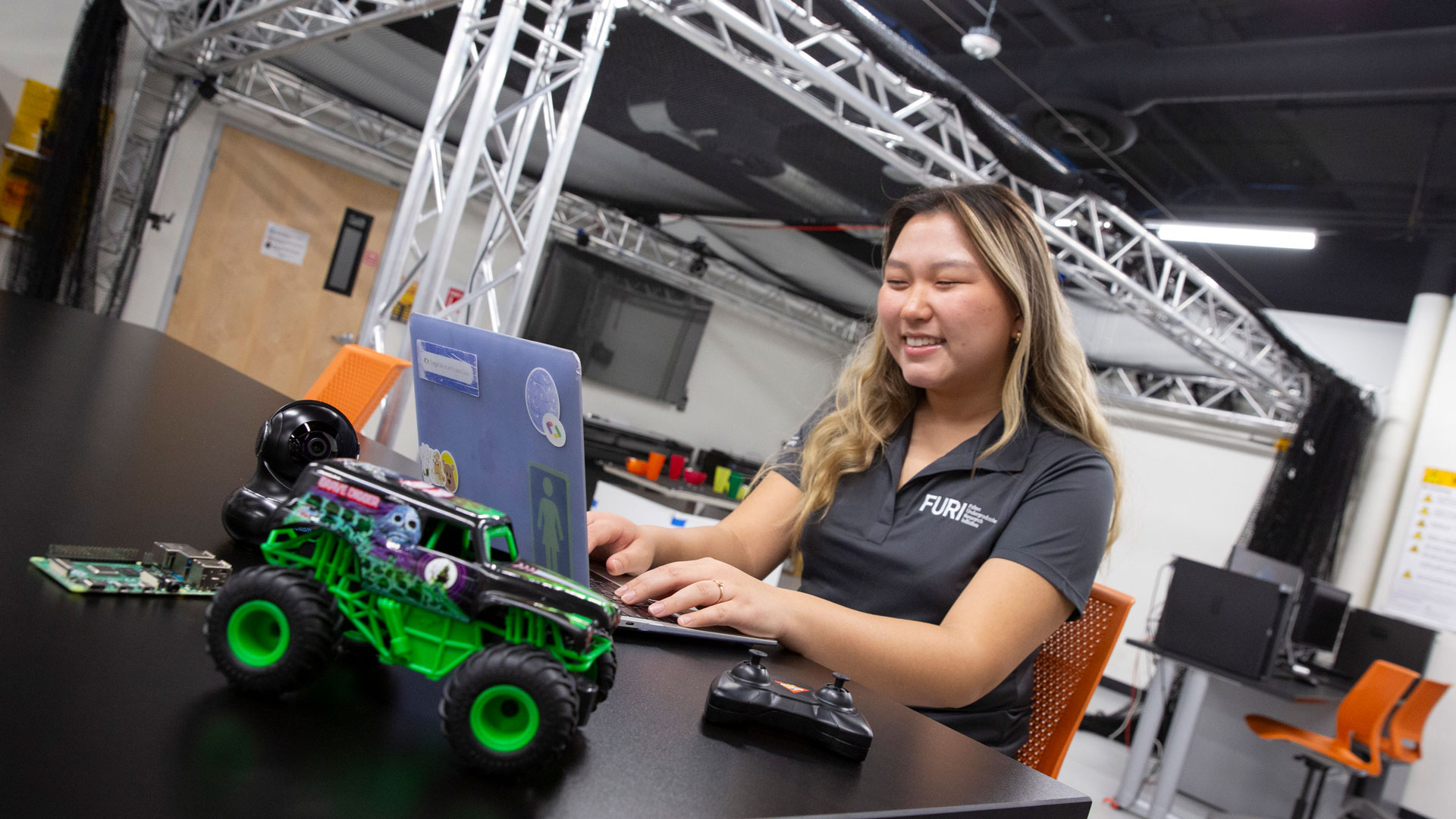
This article is part two of a two-part series highlighting student researchers presenting at the Spring 2024 Fulton Forge Student Research Expo on Friday, April 19. Read part one. Learn more about the expo.
Creating a gel that can repair bones, making space education more accessible, using computer science to stop impaired driving, controlling autonomous offroad vehicles with 5G and using machine learning for semiconductor material discovery are just some of the ways Arizona State University students are addressing real-world challenges through hands-on research.
At the Ira A. Fulton Schools of Engineering at ASU, undergraduate and graduate students have several opportunities to conduct use-inspired research in which they can apply their classroom knowledge and build new skills. Through individual projects mentored by Fulton Schools faculty members, students deliver innovation that matters in the research themes of data science, education, energy, health, security, semiconductor manufacturing and sustainability.
The Fulton Undergraduate Research Initiative, or FURI, and the Master’s Opportunity for Research in Engineering, or MORE, programs give participants valuable experiences in which they conceptualize ideas, develop plans and investigate their research questions over a semester.
Students participating in the Grand Challenges Scholars Program, or GCSP, can apply for additional funding to conduct research through the GCSP research stipend program. Conducting research is part of a GCSP student’s rigorous competency requirements designed to prepare them to solve complex global societal challenges.
These three programs enhance students’ ability to innovate, think independently and solve problems in their communities. They also benefit from the technical and soft skills they gain, which prepare them for their careers and the pursuit of advanced degrees.
Each semester, students who participate in FURI, MORE and the GCSP research stipend program are invited to present their findings at a poster session. The Fulton Forge Student Research Expo is the culmination of the students’ hard work to forge meaningful research paths and connections to make an impact.
Learn about five students who are participating in the Spring 2024 Fulton Forge Student Research Expo. Meet them and more than 100 other student investigators at the event, which is open to the public, on Friday, April 19, from 1 to 3 p.m. at the Student Pavilion on the ASU Tempe campus.
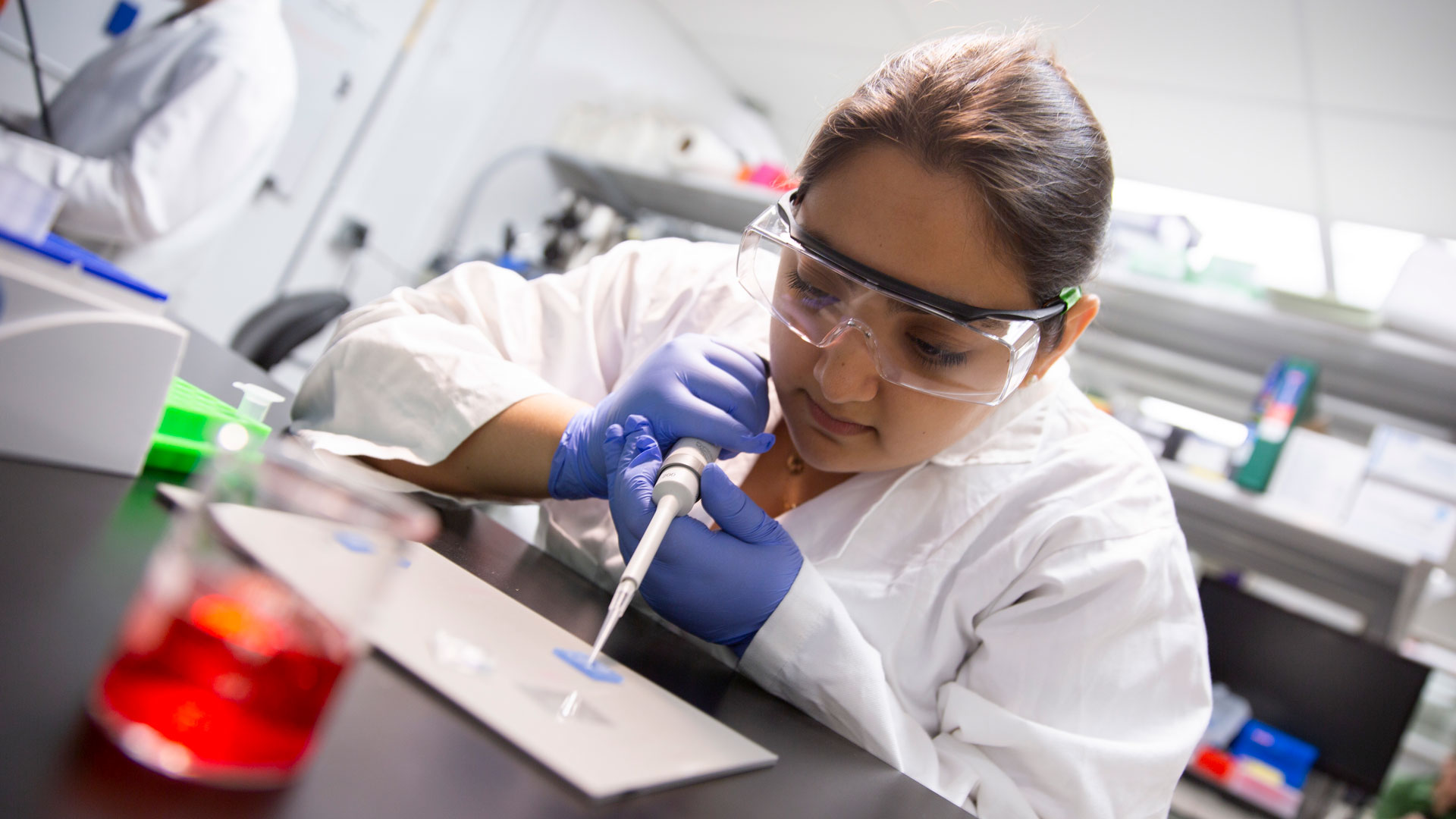
Photographer: Erika Gronek/ASU
Emily Mahadevan
Emily Mahadevan, a biomedical engineering senior and honors student in ASU’s Barrett, The Honors College, has always been interested in biology and engineering. In high school, Mahadevan learned about aortic valve replacement. After learning about the procedure, she knew that she wanted to work in a related field for her career and decided to study biomedical engineering. As part of FURI, Mahadevan is working with Julianne Holloway, an assistant professor of chemical engineering, to create a hydrogel, or water-based gel, with properties to help build bone for medical applications.

Photographer: Erika Gronek/ASU
Ritwik Sharma
Aerospace engineering sophomore Ritwik Sharma has been fascinated by rockets and aircraft since he was a child. The GCSP student is working on a cross-disciplinary project with Daniel C. Jacobs, an assistant professor in the ASU School of Earth and Space Exploration, to share his passion for space. His work, funded by the GCSP research stipend opportunity, involves developing a wayfinding method for the Completely Hackable Amateur Radio Telescope, known as CHART, an inexpensive and simple way to use radio waves to see features in outer space not visible to the human eye. His work aims to make the system more accessible for individuals and K-12 classroom instruction.
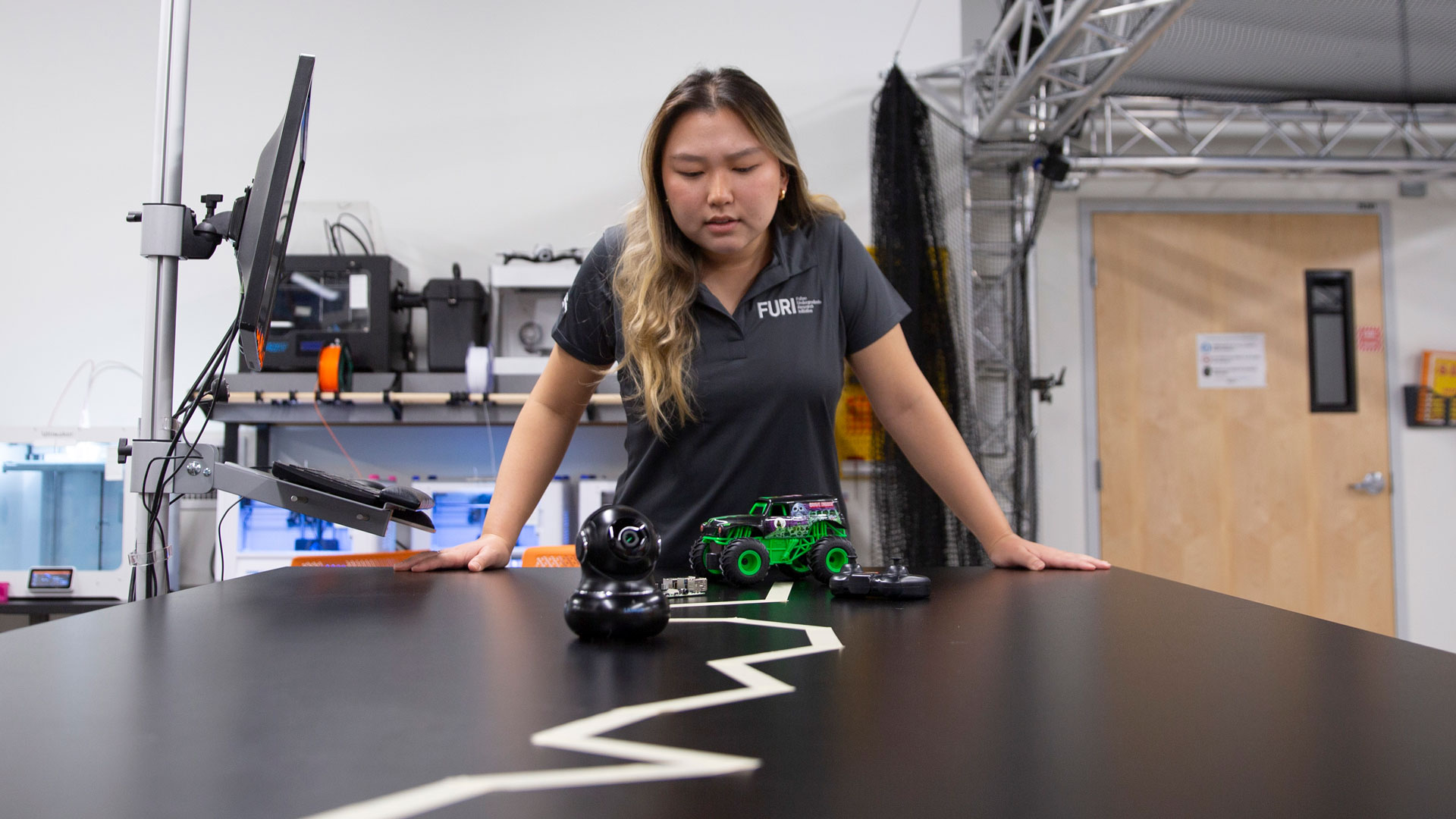
Photographer: Erika Gronek/ASU
Jenna Jae Eun Lee
Computer science sophomore Jenna Jae Eun Lee knew ASU and the Fulton Schools were the right place for her to follow her dreams after seeing the opportunities her oldest brother had while earning his engineering degree. In the FURI program, Lee is working on a passion project with David Claveau, an associate teaching professor whose focus is computer systems engineering, to design SwerveStopper, a motion-detection camera that can detect and capture images of swerving vehicles to help prevent injuries and deaths caused by impaired drivers.
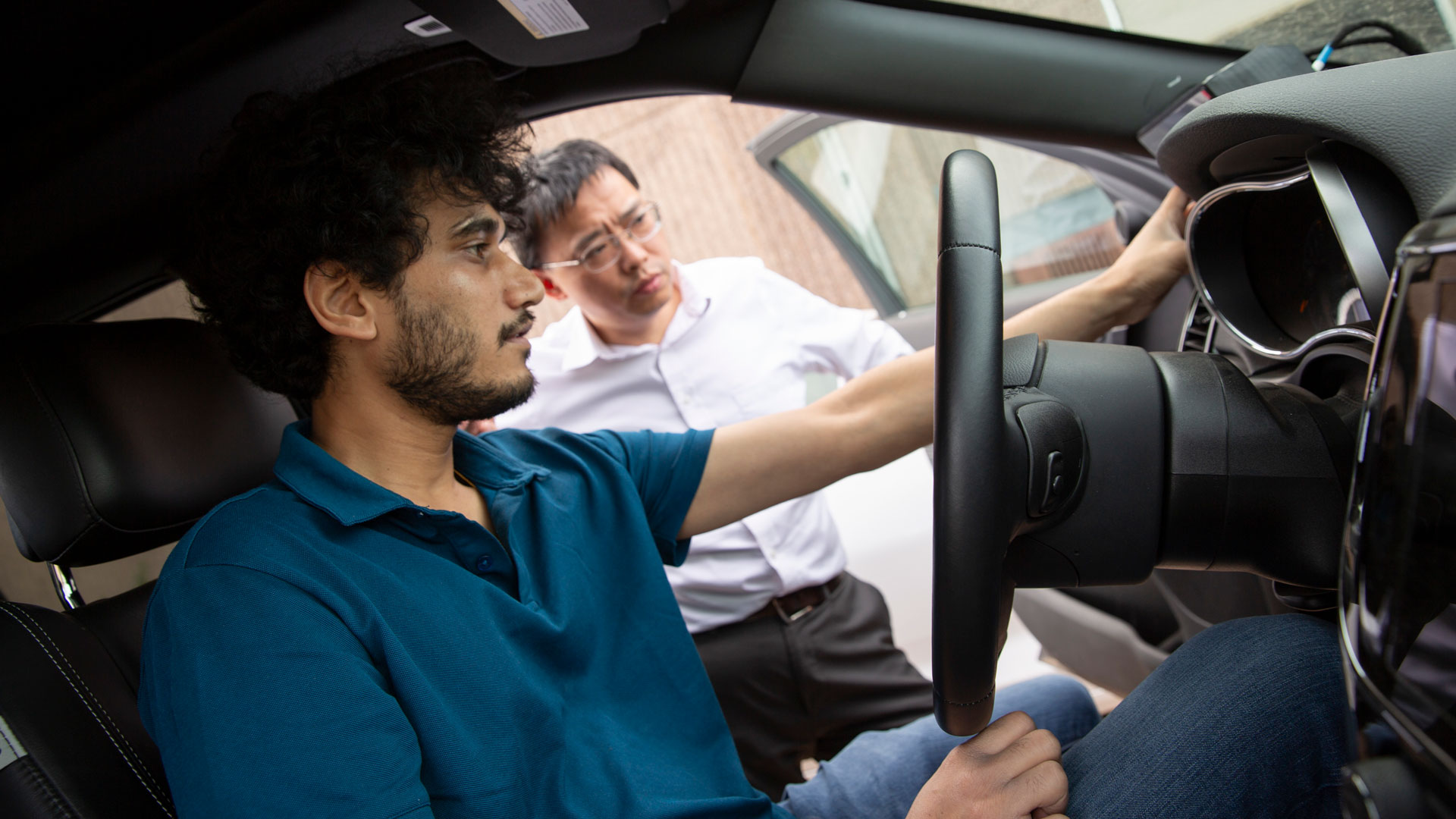
Photographer: Erika Gronek/ASU
Rohit Menon
Robotics and autonomous systems graduate student Rohit Menon (pictured in foreground) was drawn to ASU in part because of the opportunity to work on groundbreaking research, particularly in the field of robotics. His degree program at ASU and the MORE program have given him a unique opportunity to apply his passion for robotics in hands-on robotics projects. In his research with faculty mentor Yan Chen (pictured in background), an assistant professor of engineering, Menon is using the 5G communication network to create a system that can control an off-road vehicle, a drive-by-wire Jeep Grand Cherokee donated by Kubota North America, remotely with high precision.
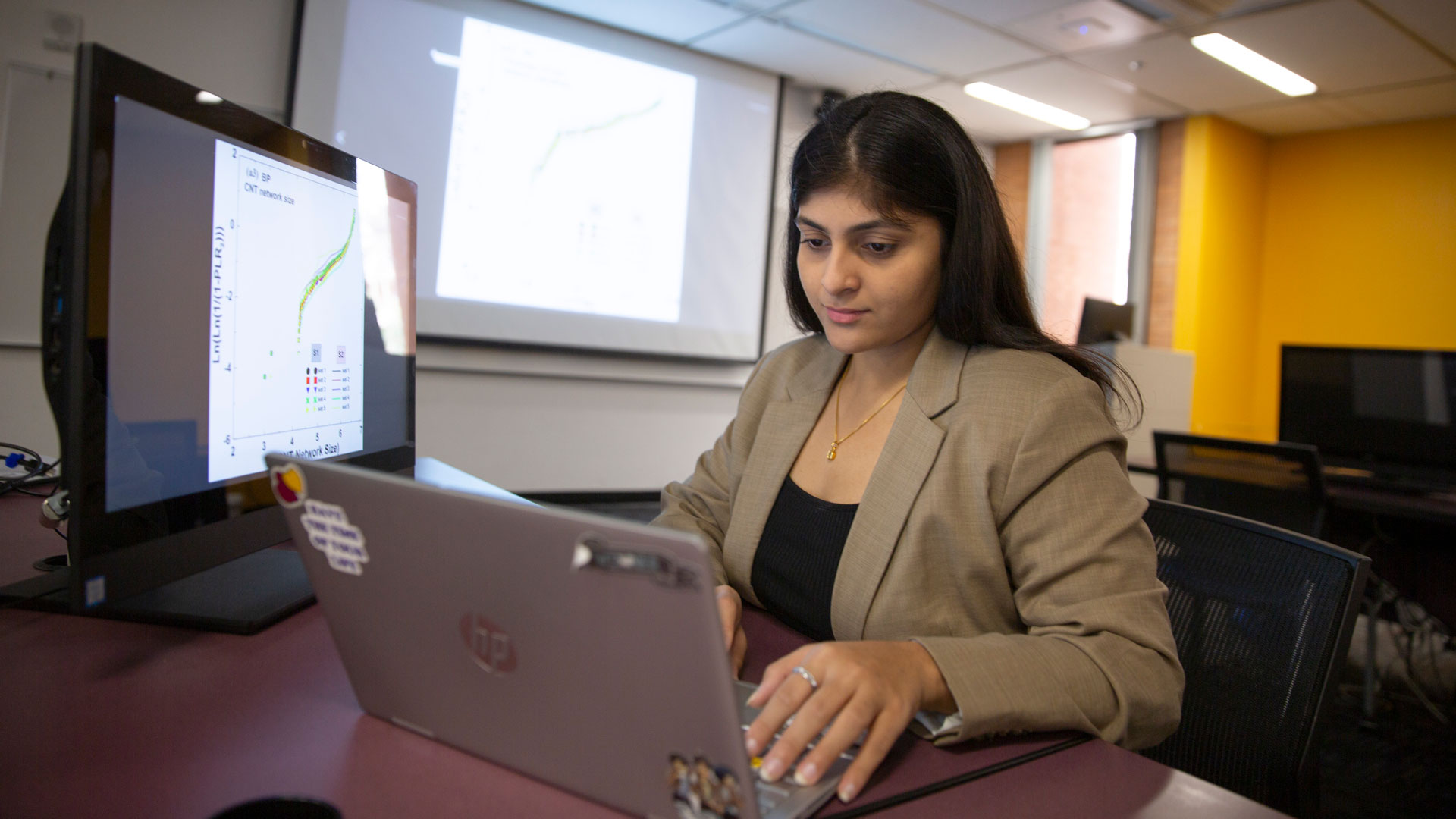
Photographer: Erika Gronek/ASU
Aishwarya Katkar
Mechanical engineering graduate student Aishwarya Katkar wanted to attend ASU because of its dynamic research atmosphere and environment of rich cross-disciplinary collaboration. Mechanical engineering provides a versatile foundation that can be applied to make meaningful impacts in many industries, including semiconductor manufacturing. In her research with the MORE program under the guidance of Masoud Yekani Fard, an assistant teaching professor specializing in mechanical and aerospace engineering, Katkar is using machine learning to help expedite material analysis to develop semiconductor device components.



































